Accessible Lisbon: tips for travelers with reduced mobility
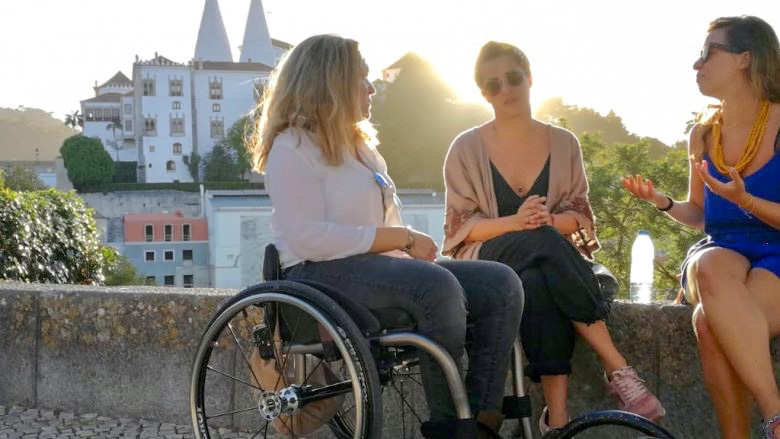
Known as “the city of the seven hills”, Lisbon isn’t the most accessible destination for travelers with reduced mobility. The steep roads in the historical neighborhoods (particularly Alfama, the oldest district in Lisbon), the cobblestone streets and the narrow sidewalks can make exploring quite difficult for wheelchair users, as well as other travelers with low mobility. But with a little bit of planning, touring the Portuguese capital is absolutely possible, in spite of these limitations.
There are some obvious things you can do to help you explore Lisbon with reduced mobility, such as hiring the services of a tour company specializing in accessible travel. But there are also other insider tips worth keeping in mind if you’d like to get acquainted with Lisbon in the most independent way possible. Today, we share with you useful information and recommendations to explore Lisbon with reduced mobility!
Local tips to explore Lisbon with reduced mobility
Take advantage of Lisbon’s public elevators
Lisbon’s public transportation system isn’t limited to the metro, buses, trains and boats. There are actually several public lifts downtown, known in Portuguese as ascensores or elevadores públicos, which connect lower and upper parts of the city. You may have already heard of one of these, Santa Justa’s lift, which was back in the day also a part of the transportation system but is now a tourist hot-spot used as a view-point. Thankfully, other regular public lifts remain. They are free to use and can be a lifesaver not only to wheelchair users and travelers with difficulties getting around, but also to everyone else who’d like to get to a different part of the city quickly and efficiently. These lifts include the following:
- Baixa and São Jorge’s castle are connected by a public elevator, locally known as Elevador do Castelo, and which actually comprises two lifts: you can get into the first and lower one at Rua dos Fanqueiros 170, which connects to upper Rua da Madalena. From here, walk to the close by Pingo Doce supermarket and, from the inside in itself, get to Chão do Loureiro, where the second lift will take you higher and very close to the entrance of Lisbon’s castle. Use these lifts as many times as you’d like, for free, between 9AM and 9PM!
- The one inside Carmo’s parking lot, which can help you connect between Rua Garret and Largo do Carmo, right downtown, in the Baixa-Chiado district. Using this lift you’ll avoid steep Rua Sacramento, in an area infamously hilly and mostly covered in slippery cobblestones.

Don’t walk… take the escalator!
This tip isn’t suitable for wheelchair users, but it will surely save some effort for travelers who can’t easily walk up and down. Escadinhas da Saúde is a long escalator which connects Martim Moniz Square to Rua Marquês Ponte de Lima, closer to São Jorge’s castle. This mechanical escalator will save you many meters of walking or step climbing!
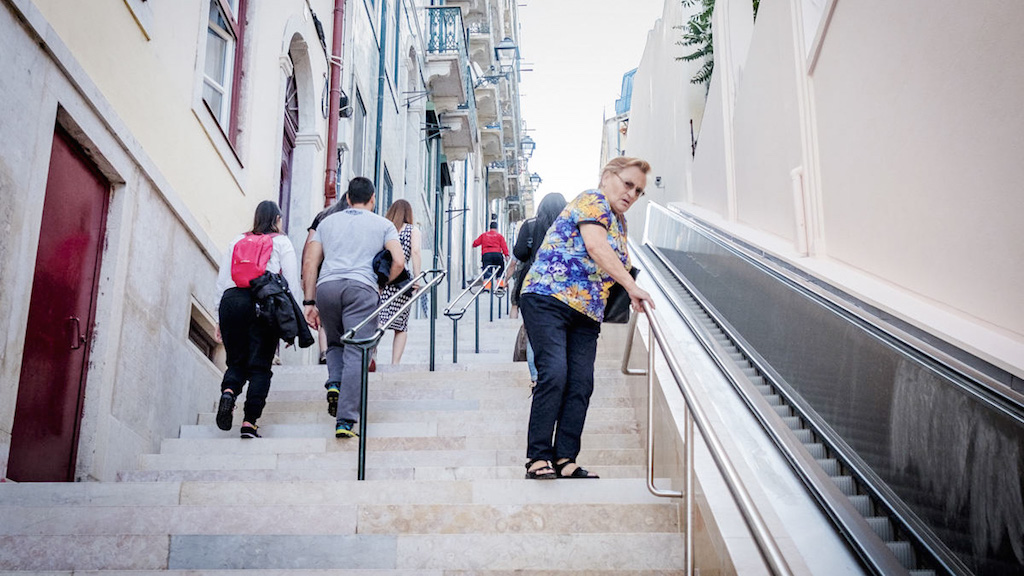
Is Lisbon’s public transportation accessible to travelers with reduced mobility?
Yes, it is! But there are some considerations you should keep in mind. The fleet of yellow buses operated by Carris includes modern vehicles with ramps and lifts which will make getting in and out of the vehicles easier. Skip the vintage looking trams and opt for the buses and modern trams with several wagons, which always have an entrance marked with a blue disabled badge. If you’re looking to use Lisbon’s metro system, please keep in mind that not all stations are indeed accessible, and thus we’d recommend checking the metro network and further information to be able to plan your trip accordingly. When it comes to trains, CP, our national train provider, has a specific information department for travelers with reduced mobility, which can be reached over the phone 24/7 to clear any doubts: +351 707 210 746 Most of the main train stations in Lisbon, including Rossio and Oriente, are wheelchair friendly.
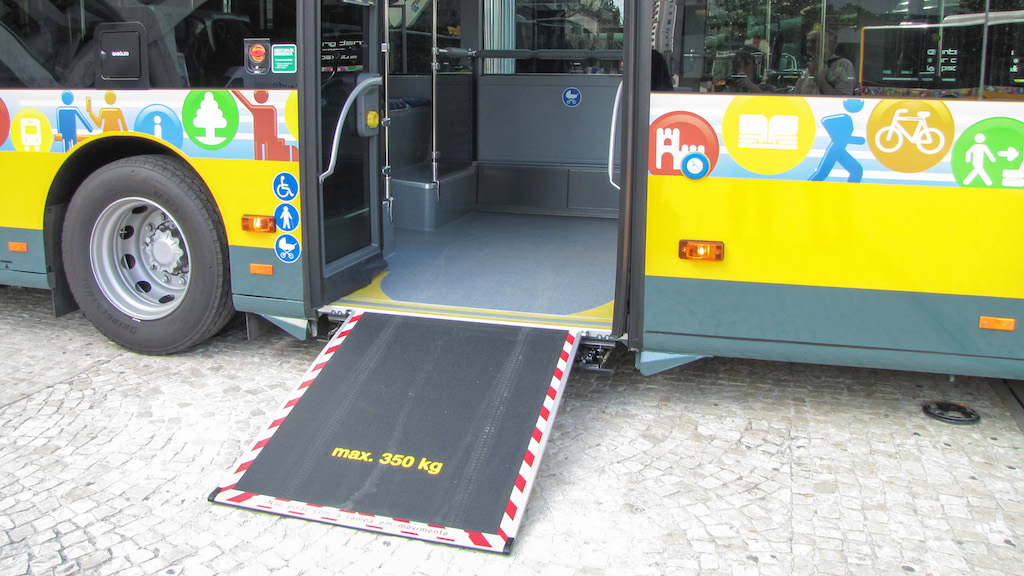
Book a Lisbon tour with a company that specializes in accessible travel
Tourism For All
Following the motto “tourism is for everyone”, this company is a travel agency and tour operator specializing in senior and accessible tourism. They offer a very wide range of experiences (including surfing and other outdoorsy activities) which you can book individually or as a part of a tour package which can take you to different places in Portugal. Whether you choose a holiday package or a day tour, know that Tourism For All works to ensure security and accessibility with maximum comfort. You can also use this company to rent specific equipment such as manual and electrical wheelchairs, electric scooters, portable pool lifts, stand up hoists and walking frames. In and around Lisbon, we’d recommend their tours Discover Lisbon, as well as Sintra and Cascais, which will will take you around the most iconic neighborhoods, introduce you to some of our country’s most important landmarks, without forgetting some of the backbones of Lisbon’s culture: gastronomy and Fado music. Fancy learning a curiosity about them? When Stephen Hawking visited Lisbon he used Tourism For All to assist during his trip and left them a raving review!

Adapted & Senior Tours Portugal
This company offers standard and personalized tours in adapted vehicles for people with reduced mobility and wheelchair users. You can book an accessible Lisbon tour which would last between 4h to 8h, covering some of our city’s highlights, from the monument district of Belém, passing my downtown Baixa-Chiado and covering the (in)famous inaccessible Alfama – in fact, they take you to some rooftops in this ancient neighborhood, to be able to appreciate Lisbon’s vistas from some spectacular and privileged positions. If you’re looking to book accessible holidays in Portugal, Adapted & Senior Tours can help you plan your stay all around!
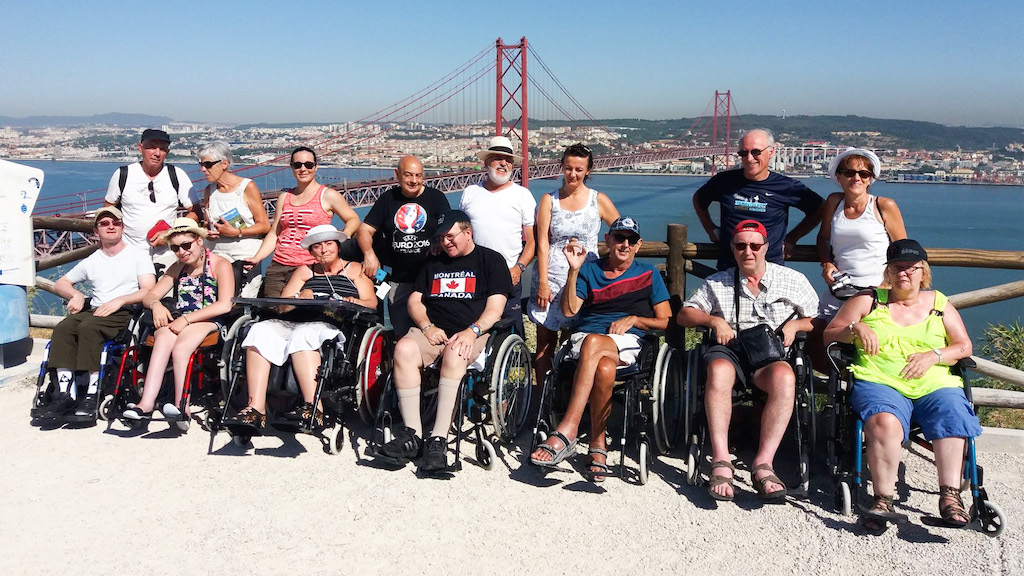
Disabled Accessible Travel
Even though this company is based out of Barcelona, they also offer accessible tours in Portugal. In fact, if you’re planning an European trip, keep in mind that they are an European accessible travel agent and can support you project your multi-country vacation. Disabled Accessible Travel offers five different tours in Lisbon, covering interests such as history, food, trips specifically designed for families or day trips to places of interest near Lisbon, such as Sintra, Estoril and Cascais. If you’d rather explore on your own, you can still count on them for equipment rental (from wheelchairs and walkers, to shower chairs and electric beds), or to arrange your transfers, including cruise port transfers if you happen to come visit us by boat.

Other services that will help you explore Lisbon if you have reduced mobility
Uber Assist
This service by the uber popular (pun intended!) rides provider was designed to support travelers who may need extra help getting around. As the company puts it in the app, they offer “reduced mobility assistance from trained drivers”. The vehicles that fall under the Uber Assist category are larger cars which are meant to fit folded assistive devices in the trunk. Besides the vehicles themselves, the drivers of Uber Assist have also received specific training which to better equip them to help riders get into the cars. The cost of the service is the same as a regular UberX, and rightfully so!
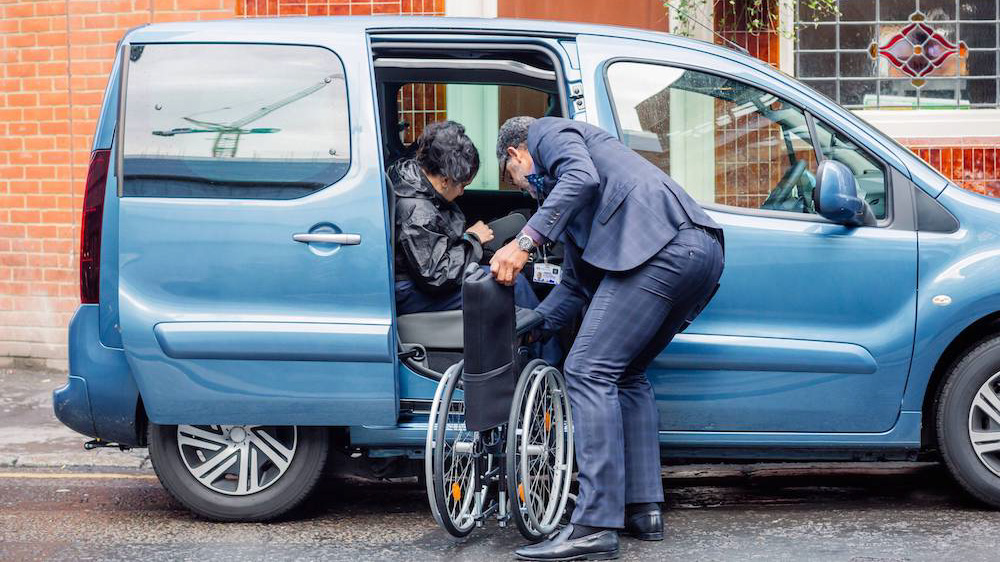
Accessible taxi services in Lisbon
While calling an Uber is for many an easier option these days, you may still want to opt for a classic taxi you’d have to call in advance to book. If for you that’s the way to go, keep in mind that these companies offer adapted vehicles to receive travelers with low mobility:
- Auto Táxis Serra D’Arga: +351 213 970 900
- Táxis Belchior: +351 962 702 272
- Vital Táxis: +351 966 227 786
- Táxis Manuel João Almeida: +351 964 092 989
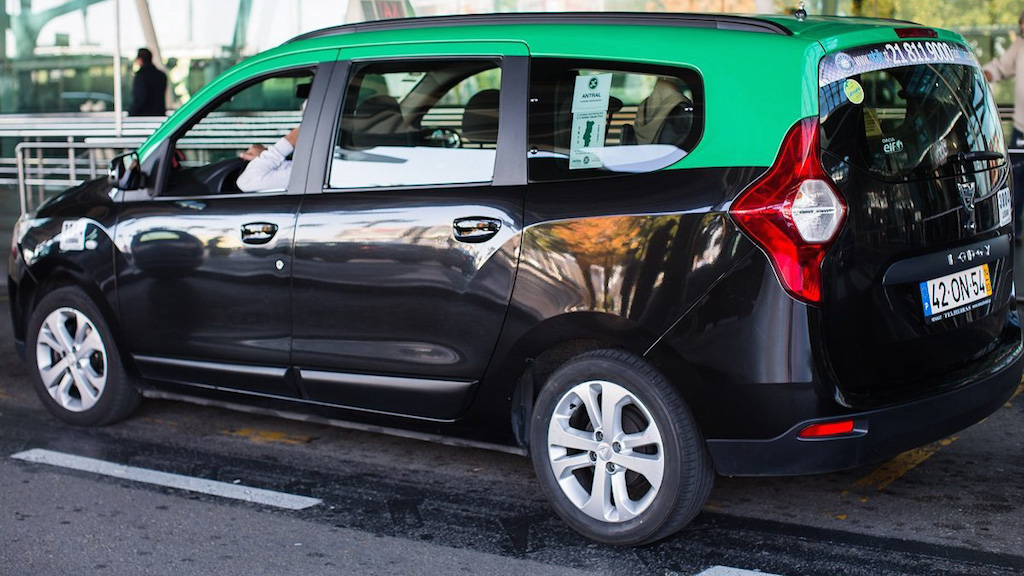
Best wheelchair accessible things to do in Lisbon
Accessible beaches near Lisbon
The Tourism of Portugal has a complete database of all the wheelchair accessible beaches across Portugal. All over the country, counting sea and river beaches, there are 208 areas which are fully ready to welcome you. These beaches are marked with a white flag and the symbol Praia Acessível, which translates as “accessible beach”. Some of these beaches also provide specific equipment such as amphibian chairs, which make a dip into the sea much easier for wheelchair users. Close to Lisbon, some accessible beaches include Carcavelos, Praia da Poça in Estoril, Praia da Figueirinha in Serra da Arrábida, Praia das Maçãs in Sintra, Foz do Lizandro and Ribeira d’Ilhas in Ericeira, amongst others – a perfect excuse to take a day trip from Lisbon! Check the complete list of accessible beaches near Lisbon here.
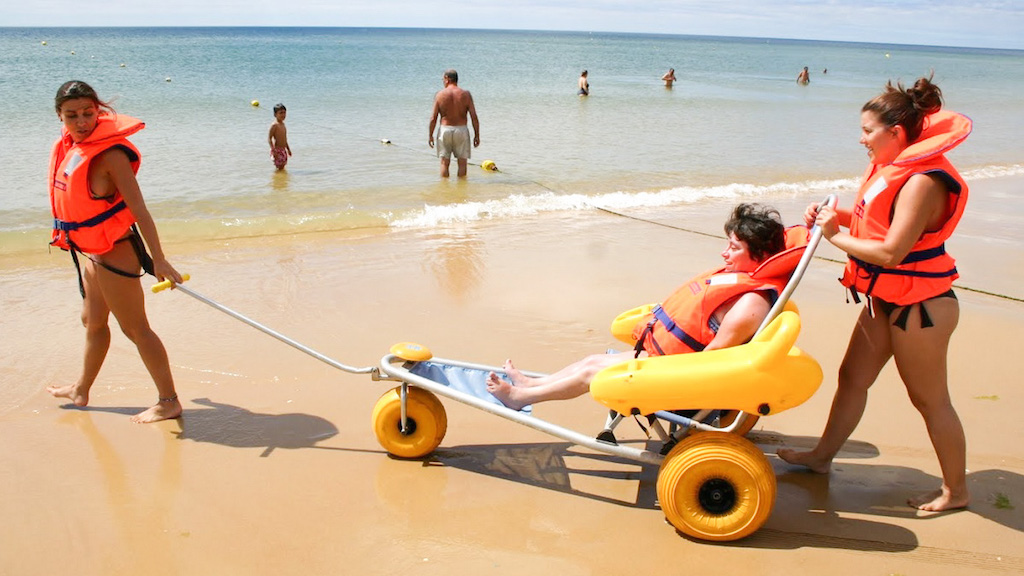
Commerce Square and downtown Lisbon
Lisbon’s main plaza, known in English as Commerce Square, but locally referred to as Terreiro do Paço or Praça do Comércio, is a large and flat area. It is fairly easy to navigate and so are many of downtown’s most popular areas, including the nearby pedestrian street Rua Augusta. If you are visiting Baixa-Chiado, in downtown Lisbon, connect to the upper part of the city to visit the castle using elevador do castelo, the public elevator we mentioned above.
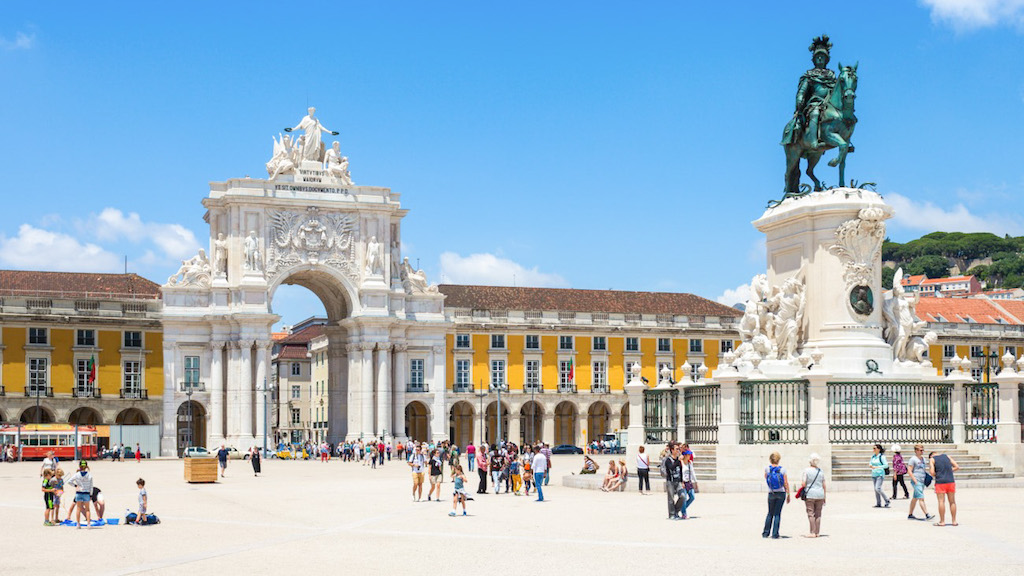
Jerónimos Monastery and Belém
Being a mostly flat area, the neighborhood of Belém is more accessible than most older parts of the city, namely Alfama and Mouraria (which are not impossible to visit, of course, but decidedly require more planning). Jerónimos Monastery is wheelchair accessible and heading to this side of the city has always worked out as a great excuse to indulge in Pastéis de Belém, the original birthplace of the iconic Portuguese custard tarts.
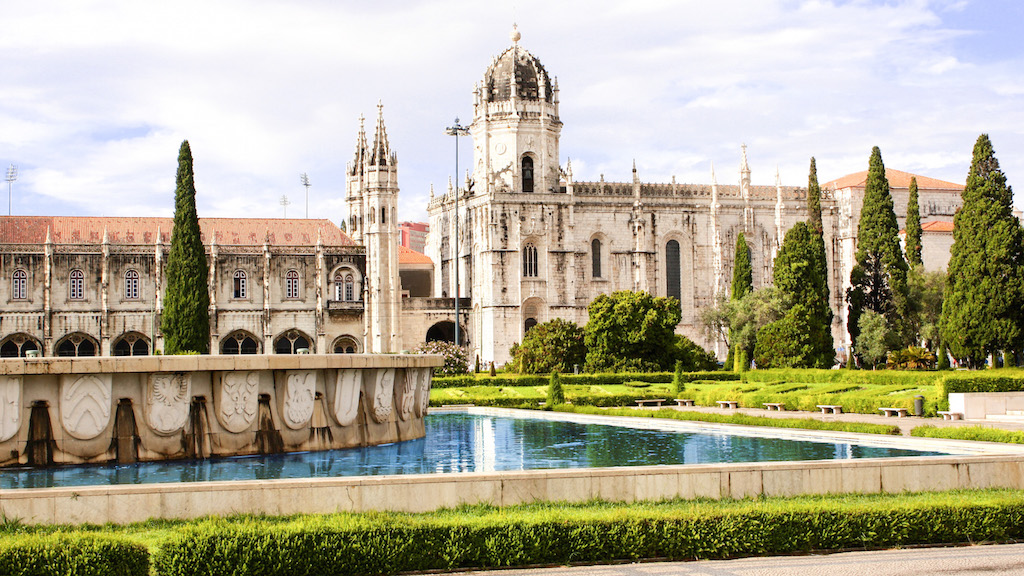
Lisbon’s stunning views are for all to enjoy
No matter your mobility situation, you can hit some of Lisbon’s best miradouros, that is, the viewpoints that are scattered a little all over the city. Some of the most popular include Miradouro de São Pedro de Alcântara, Miradouro da Graça and more. The access there may not always be easy. But if you take appropriate transportation to these actual spots, once there, nothing will stop you from enjoying some of the most inspiring views over the city and across the river to the south bank of the Tagus.
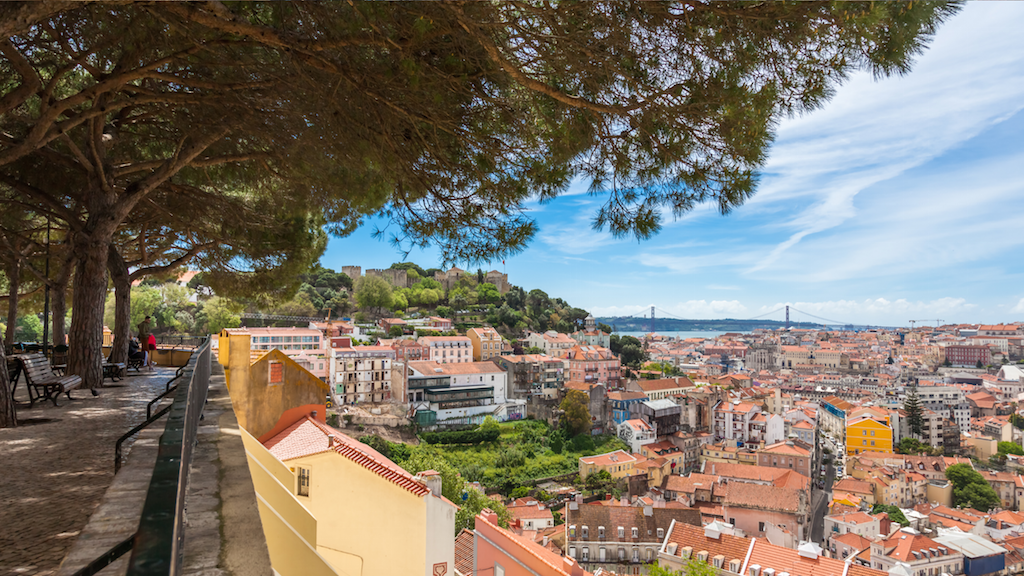
Visit Lisbon’s most celebrated museums
Lisbon’s most well-known museums are generally accessible. If you’re into art, don’t miss out on Calouste Gulbenkian Foundation or the contemporary Museo Berardo. For something more local, try the National Tile Museum or the Museo do Fado, where they even have two manually operated wheelchairs to loan for free. If expanding your horizons sounds like an alluring plan to you, we recommend heading to the Museo do Oriente or the MAAT museum of art, architecture and technology. This is just to name a few options, as there are many more Lisbon museums worth checking out, including some great museums to eat at!
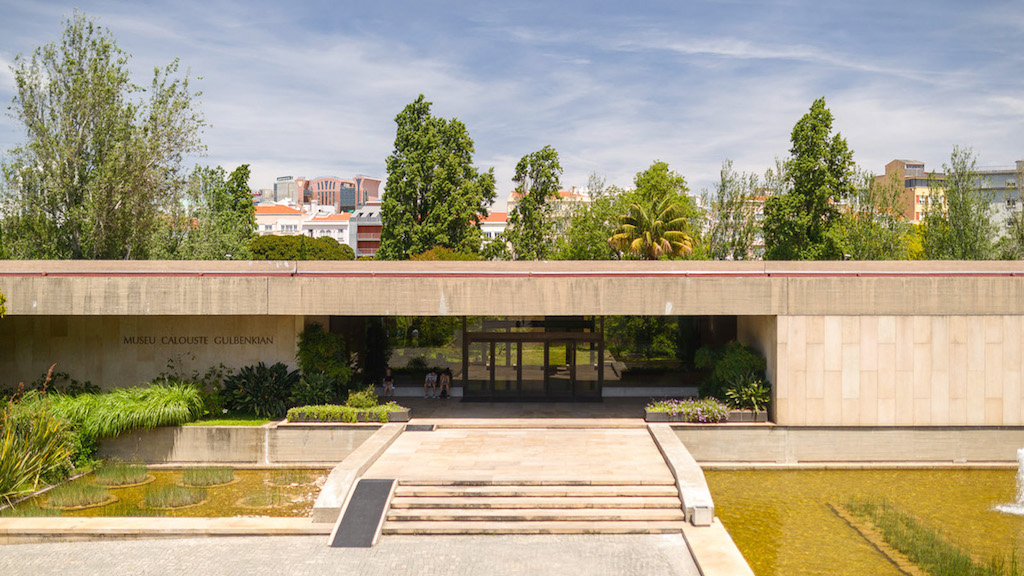
Of course the list of accessible things to do in Lisbon when you have reduced mobility doesn’t end here. These are other great things to see and do in Lisbon:
- Learn about the history of the city at Lisboa Story Centre;
- Stroll by the riverfront, using the flat walking and cycling paths which connect Cais do Sodré all the way to Belém (passing by the MAAT and and Electricity museums);
- Dive deep into Lisbon’s Oceanarium;
- After visiting Europe’s largest aquarium, you can take a ride on the cable car at Parque das Nações, where the staff will help you in whether you have low mobility or are in fact using a wheelchair;
- Enjoy Lisbon’s green spaces, chilling at public gardens such as Jardim das Amoreiras, Jardim da Estrela or Parque de Alvalade;
- Taste Portuguese food at Time Out Market Lisbon;
- Get immersed in the world of Portuguese wines at ViniPortugal;
- Try your luck at Casino de Lisboa;
- Finally, if you just want to relax after strolling all over Lisbon, book yourself an adapted massage at Clinica Mythos, which is a spa that, amongst other options, also offers treatments specifically designed for people with physical disabilities.
For further information and recommendations, Visit Portugal has put together an accessible guide to Lisbon with almost 100 pages, available in English and Portuguese, which we recommend checking out when planning your trip to Lisbon. In fact, a similar guide has been created for other cities around Portugal, if hopefully your travels take you further than the Portuguese capital. This guide covers accessible routes with highlighted things to see and do, where to eat, transportation advice, details on accessible public restrooms, and lots of information regarding accessible accommodation.
It would also be a great idea to browse Portugal Acessível, a website developed by Associação Salvador, which is one of the main Portuguese associations dedicated to “providing information about the physical accessibility in different types of spaces in Portugal, also proposing accessible itineraries and enabling interaction and exchange of experiences between community of people with motor disabilities.” Accessible accommodation, cultural and leisure recommendations, beaches, restaurants, transportation, useful services and even health services – it’s all there and meant to help you plan a more accessible trip to Lisbon!
We hope you have a great time in our city. If you have any further tips for accessible travel in Lisbon, particularly less obvious ones, we’d be so grateful if you could share them with us via Instagram. We’ll love to see your photo shoots, to know about your insights, questions, suggestions and wishes on your food & culture experiences in Lisbon and Portugal. Please share with us via Instagram Facebook,or Twitter and tag us @tasteoflisboa or #tasteoflisboa.
Feed your curiosity on Portuguese food culture:
How to be a sustainable and considerate traveler in Lisbon
Azulejos: the history of Portuguese tiles and where to buy them in Lisbon
Where and how to experience coffee culture in Lisbon
For the love of cod: a historical look behind Portugal’s obsession with bacalhau
Real people, real food. Come with us to where the locals go.
Signup for our natively curated food & cultural experiences.
Follow us for more at Instagram, Twitter e Youtube
